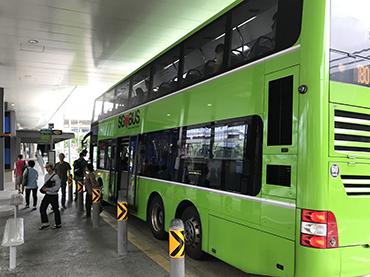Oral Reply by Minister for Transport Chee Hong Tat to Parliamentary Question on Bus Rationlisation
Mr Gerald Giam asked the Minister for Transport on the rationalisation of bus routes
a. whether LTA applies quantitative criteria and conducts quantitative cost-benefit analysis;
b. if yes, what quantitative criteria are applied and what are the factors taken into account in the cost-benefit analysis; and
c. how are intangible factors, such as certain buses providing a less crowded alternative to trains, taken into consideration.
Reply by Minister for Transport Chee Hong Tat:
1. Our public transport services are heavily subsidised by the Government, at more than $2 billion per year. This includes a subsidy of around $1 billion for trains and another $1 billion for buses. To keep our public transport system sustainable for all stakeholders, we had previously explained in this House that it is important to strike a balance between providing convenience for commuters and keeping the overall costs affordable for commuters and taxpayers.
2. This includes making changes to some of the existing bus services which run parallel to new MRT lines, and have experienced significant reductions in their ridership levels when more commuters switch to taking the MRT. These assessments are done on a case-by-case basis, taking into account commuter travel patterns and the overall connectivity and resilience of our public transport network.
3. Like Mr Giam, I also have residents who are affected when we make changes to existing bus services. It is certainly the more popular thing to do if we just keep all bus services intact, even if their ridership levels have fallen significantly, while adding new MRT lines and introducing new bus services and routes to serve residents from new estates.
4. Mr Speaker, I would like to ask Mr Giam if he accepts that taking the above approach means the total costs of our public transport system will shoot up. And the cost increase will result in higher fares for commuters and larger subsidies paid by taxpayers. This is the trade-off we face, between providing convenience for commuters and keeping the overall costs affordable for commuters and taxpayers.
5. So when we argue against changing existing bus services which run parallel to new MRT lines, and have experienced significant reductions in ridership levels, we must also be honest in acknowledging that this will come with a price tag. It is not correct to only focus on the convenience for some commuters, without recognising that such an approach will end up with higher fares for all commuters and higher subsidies that all taxpayers have to bear.
